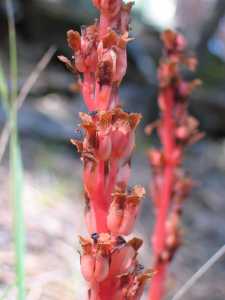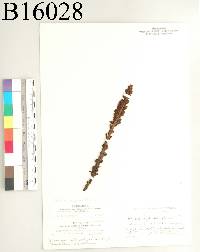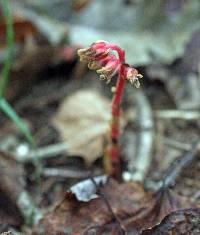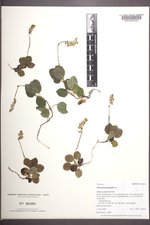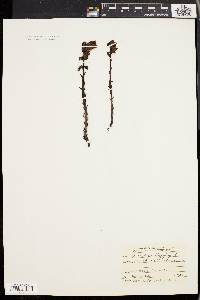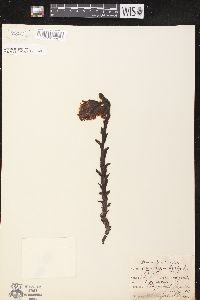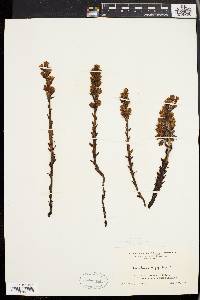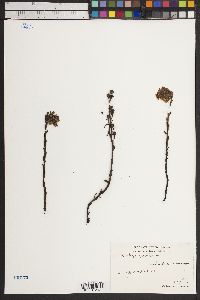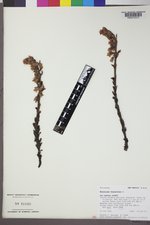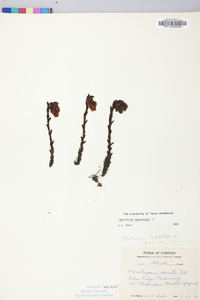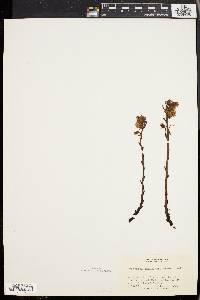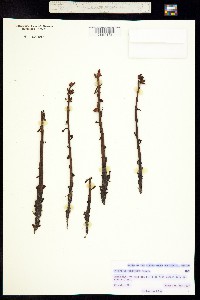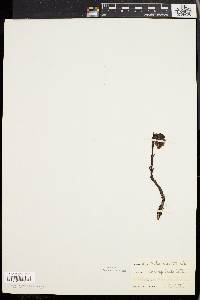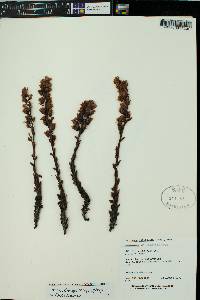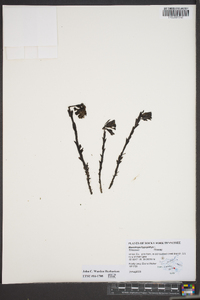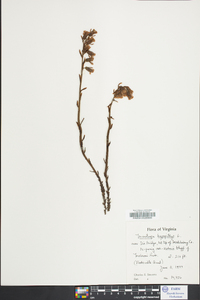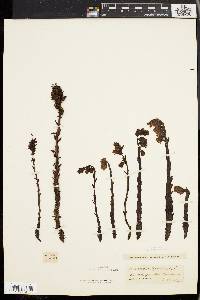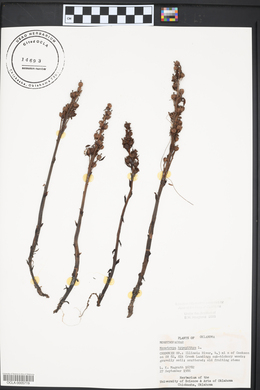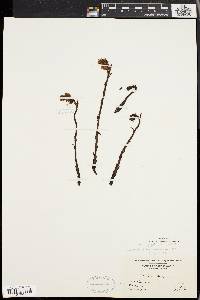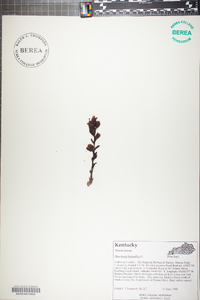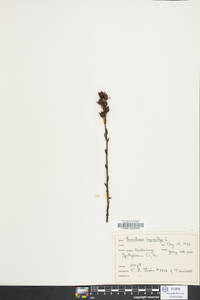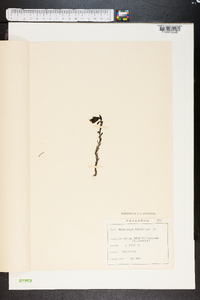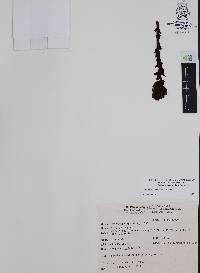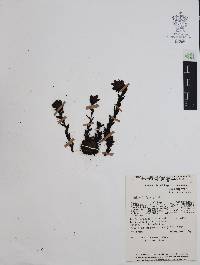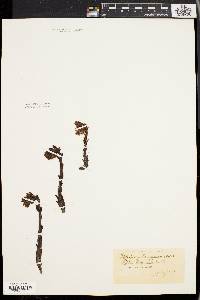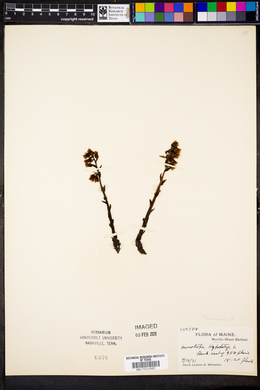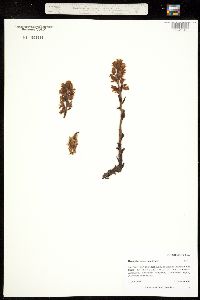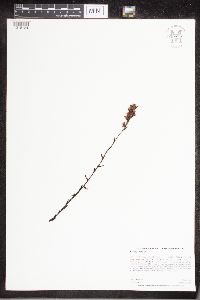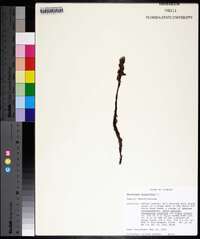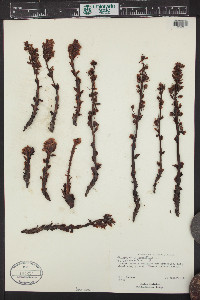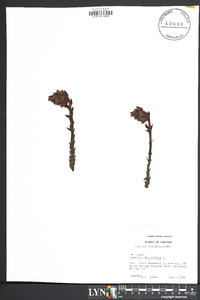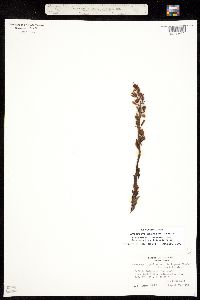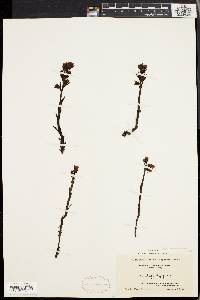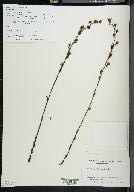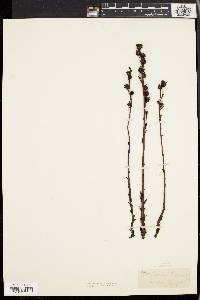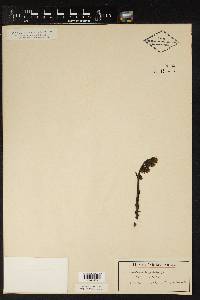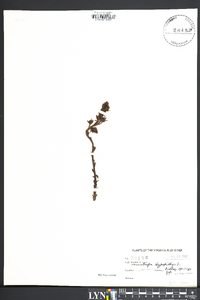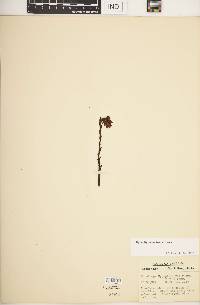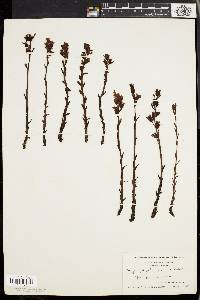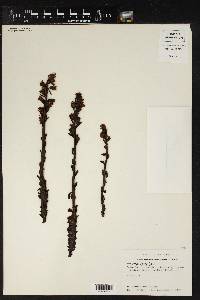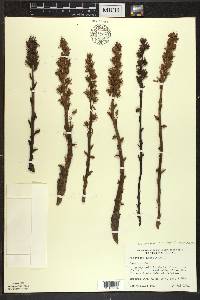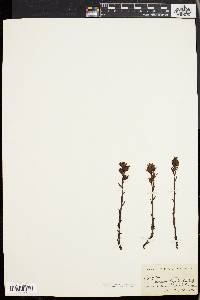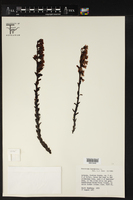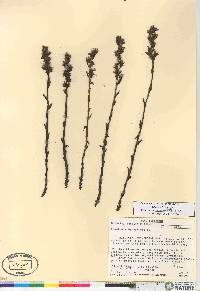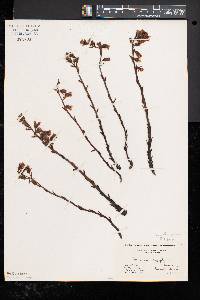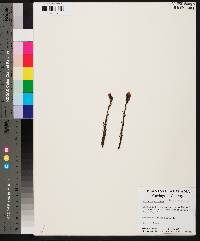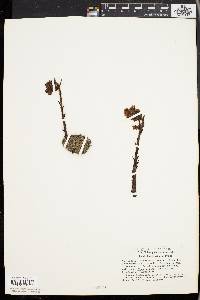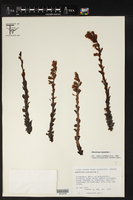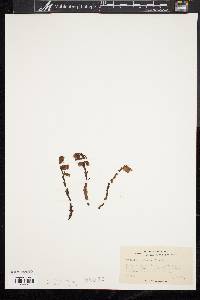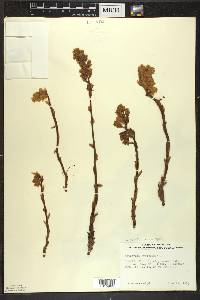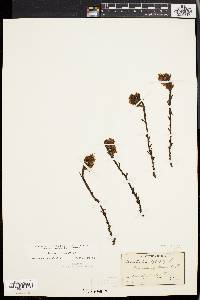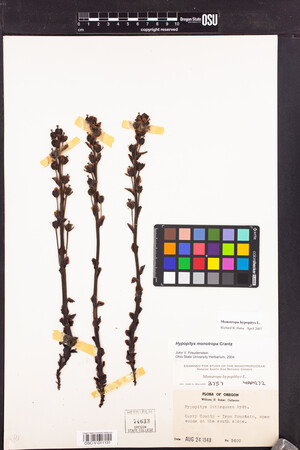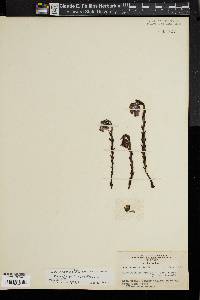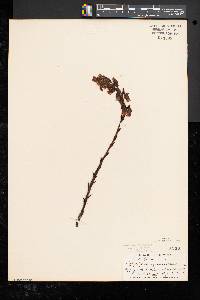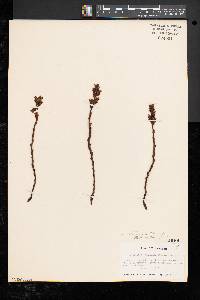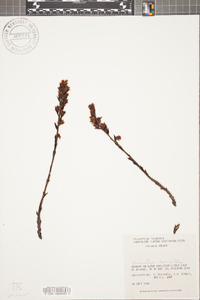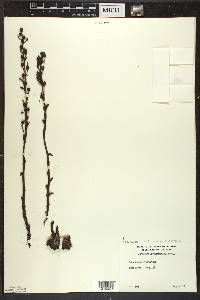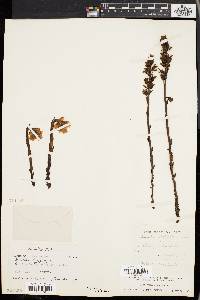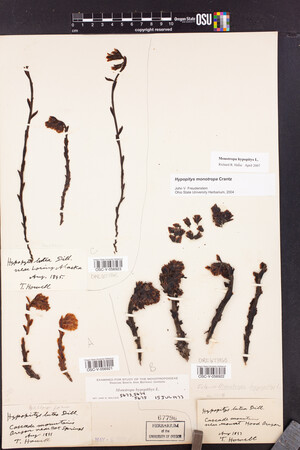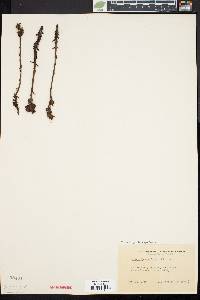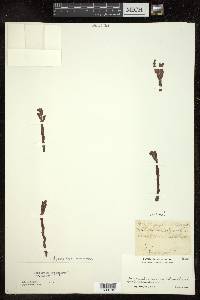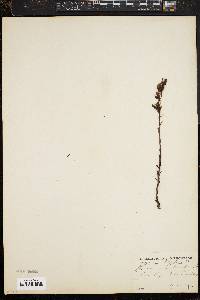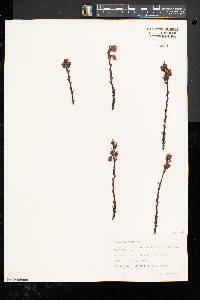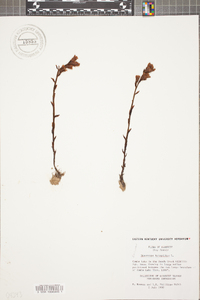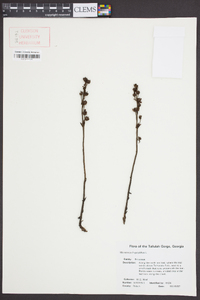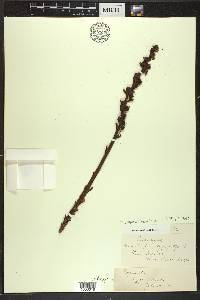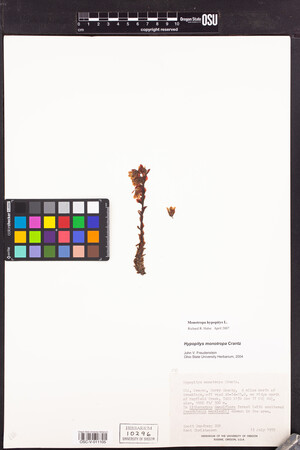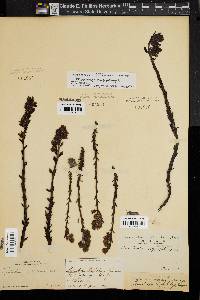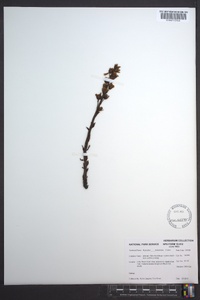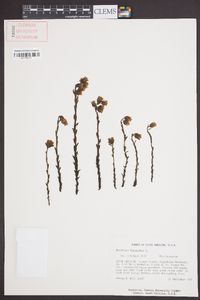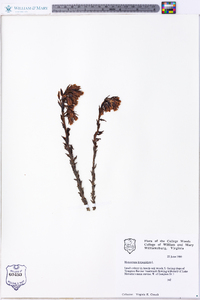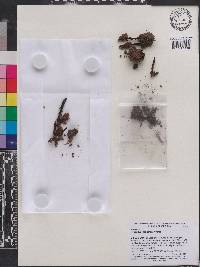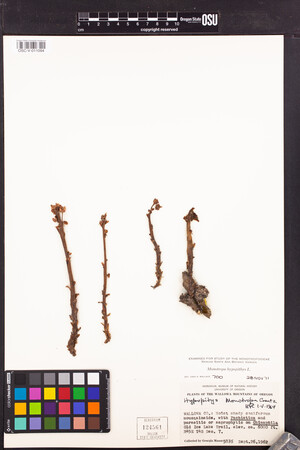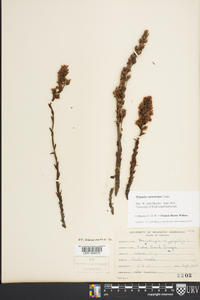
|
|
|
|
Family: Ericaceae
Yellow Bird's-Nest, more...many-flower Indian-pipe, pinesap
[Hypopitys americana (DC.) Small, moreHypopitys fimbriata (A. Gray) T.J. Howell, Hypopitys hypopitys Small, Hypopitys insignata Bickn., Hypopitys latisquama Rydb., Monotropa fimbriata A. Gray, Monotropa hypopithys L., Monotropa hypopithys var. americana (DC.) Domin, Monotropa hypopithys var. latisquama (Rydb.) Kearney & Peebles, Monotropa hypopithys var. rubra (Torr.) Farw., Monotropa hypopitys L., Monotropa hypopitys subsp. lanuginosa (Michx.) H. Hara, Monotropa hypopitys var. americana (DC.) Domin, Monotropa hypopitys var. latisquama (Rydb.) Kearney & Peebles, Monotropa hypopitys var. rubra (Torr.) Farw., Monotropa latisquama (Rydb.) Hultén] |
Inflorescences usually secund racemes, rarely solitary flowers, 5-32 cm; axis yellowish to orange or reddish. Pedicels nodding at anthesis, erect in fruit, (finely hairy or glabrous, sometimes glandular-hairy. Flowers: sepals absent or 4-5, not similar to subtending bracts, spatulate to elliptic, 7-12 × 1-5 mm; petals 4-5, yellowish to orange or reddish, oblong, 8-17 × 4-8 mm, base narrowly saccate, margins ciliate to erose, apex acute to rounded, adaxial surfaces often hairy; nectary lobes 8-10, (paired), stout, not elongate or curved-cylindric; stamens 8-10; filaments sparsely hairy; anthers horizontal at anthesis, horseshoe-shaped, sacs of equal size; ovary 4-8 × 3-6 mm, usually hairy; style 2-10 × 1-2 mm, sparsely hairy; stigma umbilicate, 1.5-3 mm diam., often subtended by ring of crowded hairs. Capsules 4-5-segmented; segments often deciduous after seed dispersal, thin, 6-10 × 4-8 mm, without connecting, pinnate, vascular bundles when open. Seeds 0.5-1 mm, mostly membranously winged. 2n = 48. Flowering spring-fall. Moist to mesic or dry, mixed-deciduous and coniferous forests; 0-4300 m; St. Pierre and Miquelon; Alta., B.C., N.B., Nfld. and Labr. (Nfld.), N.S., Ont., P.E.I., Que., Sask.; Ala., Alaska, Ariz., Ark., Calif., Colo., Conn., Del., D.C., Fla., Ga., Idaho, Ill., Ind., Iowa, Kans., Ky., La., Maine, Md., Mass., Mich., Minn., Mo., Mont., Nebr., N.H., N.J., N.Mex., N.Y., N.C., Ohio, Okla., Oreg., Pa., R.I., S.C., Tenn., Tex., Vt., Va., Wash., W.Va., Wis., Wyo.; Mexico; Central America (Guatemala); Europe; c, e Asia. Plant: Flowering stems to 30 cm tall, with 1 to usually several flowers, yellowish to orange or reddish, nodding, finely hairy, particularly in upper part of stem, smoothish below. Leaves: no green leaves Flowers: 1 to usually several flowers, with sepals (0-)4-5, these densely hairy inside, sparsely so outside; petals saccate at base, free from sepals; stigma umbilicate, surrounded by a ring of hairs beneath Fruit: FRUITS erect, globular capsules, 4-8 mm wide; SEEDS minute, spindle-shaped Misc: Coniferous forests in rich humus; 2100-2900 m (7000 - 9500 ft); Jul-Aug Notes: Flowering stems to 30 cm tall, yellowish to orange or reddish, nodding, finely hairy, particularly in upper part of stem, smoothish below REFERENCES: Haber, Erich. 1992. Monotropaceae. Ariz.-Nev. Acad. Sci. 26(1)2. FNA 2009, Kearney and Peebles 1969, McDougal 1973 Duration: Perennial Nativity: Native Lifeform: Forb/Herb General: Herbaceous, pink (yellowish to orange or reddish) colored perennials without chlorophyll, 10-50 cm tall, stout, somewhat pubescent, parasitic on mycorrhizal fungus, fleshy roots form a dense mass that is completely enveloped by the fungus and has no direct contact with the soil. Leaves: Scalelike, the upper ones 10-15 mm long, the lower ones smaller. Flowers: Small, yellowish to orange or reddish like the stems, bell-shaped, petals 4 to 5, oblong, 10-12 mm long, pubescent, distinct, scalelike, tardily deciduous, often saccate (pouched) at the base, the upper ones 5-merous, the lower ones often 4-merous, sepals absent or 4-5, ciliate, spatulate to elliptic, 8-11 mm long, nectary lobes 8-10, (paired), stout, not elongate or curved-cylindric, stamens 8-10, filaments sparsely hairy, anthers horizontal at anthesis, horseshoe-shaped, of equal size, flowers borne rarely solitary or (more commonly) in a raceme, nodding at anthesis, erect in fruit. Fruits: Subglobose capsules, 5-7 mm long, with a persistent style 5-7 mm long, capsules with 4-5 segments, these often deciduous after seed dispersal, thin, without connecting, pinnate, vascular bundles when open. Seeds 0.5-1 mm, mostly membranously winged, numer Ecology: Found on moist to mesic or dry soils, in shady places among pines, firs, and aspens, from 0-14,000 ft (0-4276 m); flowering July-August. Distribution: British Columbia to the Alantic Coast, south to Mexico. Notes: Look for this odd-looking, red, pink, or yellowish plant with pendulous flowers of the same color among tree roots and on the forest floor near damp areas. Ethnobotany: The plant was used in a love potion. Synonyms: Hypopitys monotropa, many others, see Tropicos Editor: LCrumbacher 2011 Etymology: Monotropa comes from the Greek monos, "single," and tropos, "a turn" or trope, "a turning," thus meaning "turned or directed to one side," alluding to the one-sided inflorescence, while hypopithys comes from the Greek hypo, "under" and pitys, "the pine," thus found under pines. Stems 1-3 dm, often clustered, yellow, tawny, pink, or red, ±pubescent; raceme dense, at first nodding, erect at anthesis; fls 8-18 mm, the lower usually 4-merous, the terminal often larger and 5-merous; sep lanceolate, erect, unlike the basally saccate pet; anthers opening by a single cleft into 2 very unequal valves; style shorter than the ovary; stigma ±villous at the margin; 2n=16, 48. Moist or dry woods, usually in acid soil; interruptedly circumboreal, but not at high latitudes, in Amer. s. to Fla. and Mex. (Hypopitys americana) Gleason, Henry A. & Cronquist, Arthur J. 1991. Manual of vascular plants of northeastern United States and adjacent Canada. lxxv + 910 pp. ©The New York Botanical Garden. All rights reserved. Used by permission. From Flora of Indiana (1940) by Charles C. Deam Saprophytic on slightly acid humus in dry or moist woods. Infrequent to rare, possibly in all parts of the state. In addition to the counties indicated on the map it has been reported from Cass, Franklin, Hamilton, Marion, Vigo, and White Counties. Usually found sparingly in black and white oak woods. I found it in Clark County, however, as an abundant plant in a low, flat, beech and sweet gum woods where the soil is a hard, white, slightly acid clay. The stigmas of all of our Indiana plants are pubescent. ...... Indiana Coefficient of Conservatism: C = 8 Wetland Indicator Status: N/A |
|
|
|
This project was made possible in part by the Institute of Museum and Library Services [MG-70-19-0057-19].
Powered by Symbiota

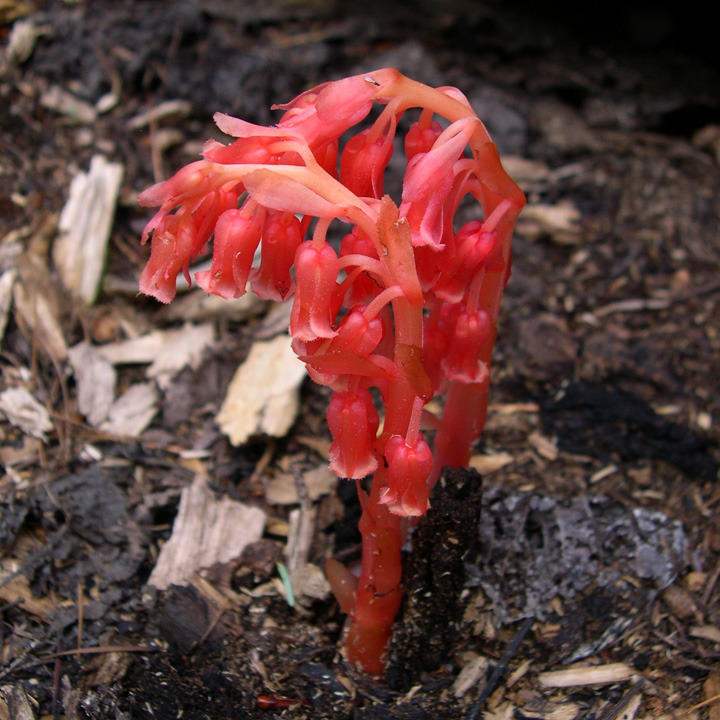
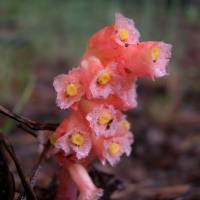
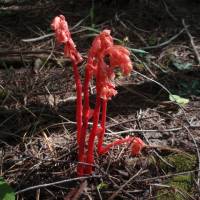
_tn.jpg)
_tn.jpg)
